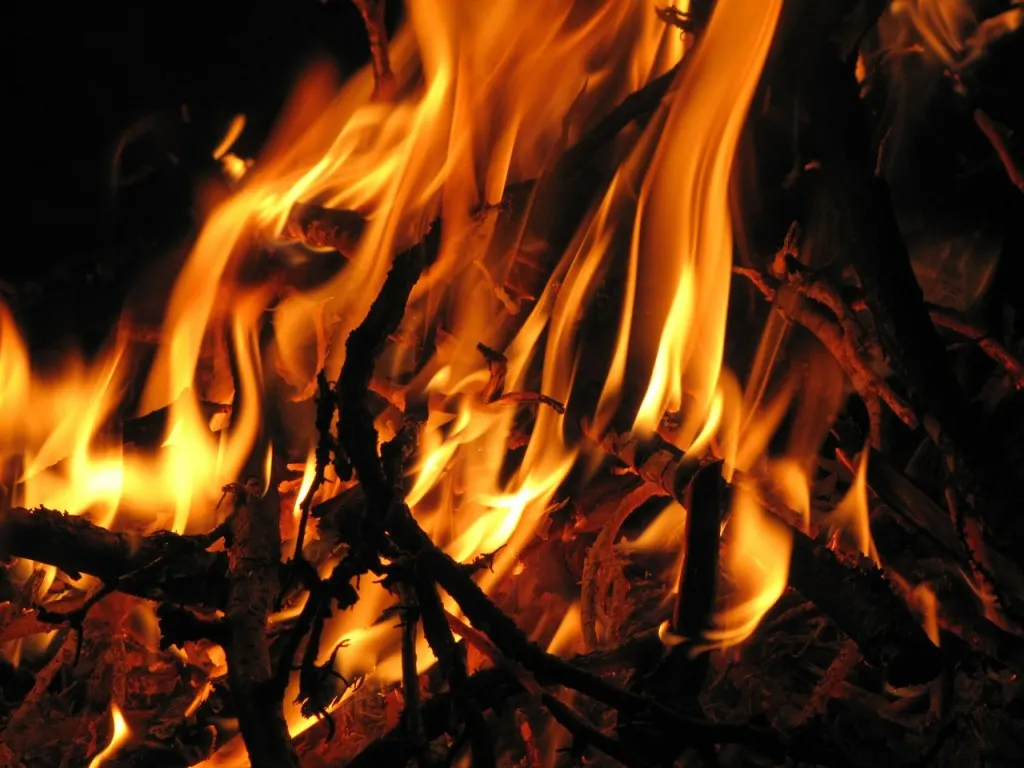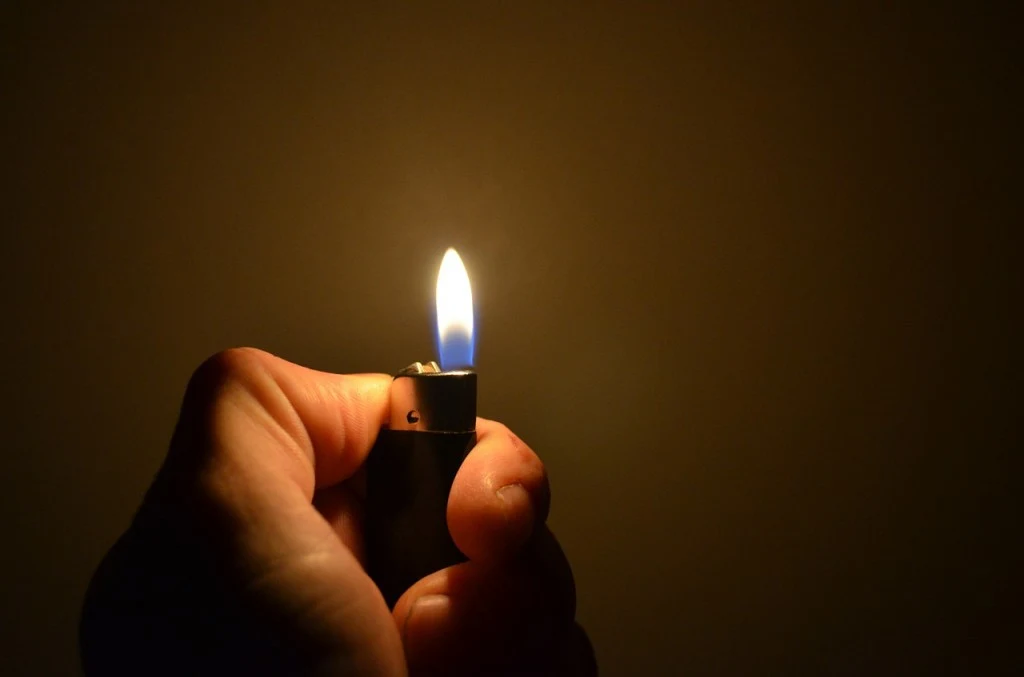Fire Making Techniques
When in a survival situation the first priority is adequate shelter, but often that isn’t enough. We all know the importance of fire. It acts as a heater, a way to cook food, and even a companion to keep the noises of the night at bay.

All too often the hunter or camper slaps a cigarette lighter in their pocket and thinks they have it covered. While this can be an excellent first choice and is great for the average fire requiring generous dowsing of gasoline or lighter fluid, more thought and time should be invested in fire-making skills BEFORE they are needed.

The key to a good fire without chemical fuels is to start with the driest tinder available. Dry grass, inner bark on dead logs, the finer and fuzzier the better. Use small kindling stacked over the tinder bundle as kindling to dry and ignite larger and larger sticks until a small log can be thrown on.
There are several products on the market for emergency fire-making in survival situations.
Metal match and blast match
One of the best on the market is a metal match. It is simply a small block of magnesium with a sparking insert. A small pile of shavings is gathered under tinder and the sparks are showered by dragging a knife blade over the insert, igniting the shavings, which ignite the tinder.
A blast match is simply a larger version of the sparking insert minus the magnesium. It can be used with a single hand.
Strike anywhere matches
If wood matches are used, make certain they are weatherproof by either coating them in paraffin or are kept in a water-tight container.
Strike anywhere matches are preferred over safety matches in case the striking surface is wet. This is about as much preparation taken and little thought is given to emergency situations where you are caught with little more than what is in your pockets.
If you are packing a survival kit, many fire-starting options should be included. Many options fail on the first attempt and not many people are able to get a fire lit with their first match. Also, long-term survival may strain the content of your match container or butane lighter.
If you think you may find yourself in such a situation, not only should you read up on fire-making techniques, but practice to attain the skill needed to make fire without high-tech gadgets.
In my survival kit, I have several methods, some quick and lazy methods and some long-term tools that can be replenished in the wild.
Calcium carbide
For emergencies, I prefer to keep a small container of calcium carbide. As long as it isn’t crushed or vibrated to a powder, it can be a lifesaver in wet conditions or rainy weather.
A few crystals are placed under dry-ish tinder and water is sprinkled over the crystals and sparked. It gives off methane gas and the more water that is added the higher the flame. You can light a snowball on fire and place it under your tinder bundle.
Cotton balls and dryer lint
Cotton balls can be saturated with petroleum jelly for a great tinder starter. Dryer lint works well too. Cardboard rolled into spirals and saturated with paraffin and stored in a tuna can work well.
When potassium permanganate and glycerin are mixed together you get flames without an ignition source.
A regular magnifying glass can ignite tinder on a sunny day, but a thin reading lens magnifier similar to a plastic sheet of paper can reach 3,000 degrees point, no tinder is required.
An empty lighter is still good if you gather the fuzz off your socks and collect it in a square of tissue paper. Catch the spark with the fuzz and ignite the paper. 000 steel wool is an excellent tinder and can be ignited by spark or with a battery. Simply touching a 9 volt battery to steel wool can save your life or wreck your day, keep them separated in your pack. I have had them meet in my bag while bouncing around in a car.
Wax paper is good to have as it will burn even when wet. The bottom of a pop can may be polished with chocolate, or cloth and focused on tinder to ignite it. All these gadgets are good, they even have a last ditch method you can purchase that is basically napalm in an envelope and if all other methods fail, the envelope can be lit and the tinder sticks and ground will all go up in flames. This is great if hypothermia is setting in and motor skills deteriorate.
Long term renewable methods go way back in time. The oldest is of course natural fire from a lightning strike or lava flow…..but who can wait around for that?!?
Friction was the preferred method by our ancestors. Experiment with the natural materials in your area and master this skill before you need it, it isn’t as easy as Hollywood makes it seem. I have only ever seen two movies that got it right, Castaway, and Quest for fire.
Tom Hanks made fire with a fire plow, where a stick is rubbed back and forth in a slot and the dust is gathered to ignite dry tinder.
Quest for fire used the spindle on a fire board method where a drill hole is started and a Pac-man, or pie slice is taken out as a pocket to gather the friction dust in, when a red hot coal of this dust is gathered it is transferred to the dry tinder bundle and blown into flame.
There is also a fire saw where the dust is from a thong pulled back and forth under wood, but the cord often breaks when you are almost there.
The hand drill is tough to master, a bow drill is a much easier and reliable method but requires lots of practice and coordination.
All of these methods can be seen on Youtube. A spark can be captured in char cloth or chaga and added to a tinder bundle and blown into flame.
Chaga is a natural fungus that grows on birch trees in some areas.
Char cloth can be made by taking a metal container such as an empty cookie tin and punching a nail size hole in the lid. Cut up an old pair of blue jeans (white tee shirts work well too) into 2″ squares and loosely pile them in the tin. Place them in the coals of an existing fire or BBQ grill until the smoke starts to fade from the hole. Take it off and cool without opening the tin. When it is cool, you will find black cloth squares that are fragile, but if kept dry will catch a spark. The spark can come from an old lighter, flint and steel, a blast match, pyrite etc.
An ember can also be obtained by taking a small piece of chaga or char cloth and placing it on the piston of a fire piston and slamming it into the socket. The compressed air will ignite it.
There are dozens of methods I haven’t mentioned, but the key is to chose the ones you are interested in and master them. You should be able to walk into the area of your choice and with no tools, and obtain fire in less than friendly conditions.
In my particular area, the Southern Black Hills of South Dakota, and the high planes, friction fires can be made using yucca stems for the spindle and fire board, other resin free woods can be substituted. Cottonwood for the fire board works well. Cordage for a fire bow to spin the spindle can be made from the yucca leaves, a boot lace or parachute cord. A socket can be made from wood lubricated with oil from your face so that that end of the fire spindle doesn’t get as hot as the business end. You may be lucky enough to find a small stone with a natural depression, antler and bone may also be used.
Another cool method instead of simply using a hand drill is to add a notch at the top of the stick and using a cord with thumb holes to keep constant downward pressure on the spindle without having to stop and start at the top every few seconds.
If travel is required from camp to camp, a coal from the fire can be kept in a small container wrapped in tinder and kept from oxygen. Natives would use a bison horn with a rawhide cover. When you arrive at the new camp, add the smoldering coal to the tinder pile and blow it into flames.
The more options you have, the better your chances in a survival condition.
Again, I cannot emphasize this enough, PRACTICE!
These skills may be hard earned, especially the friction fires. Carry what you need, but have a back up plan.
It may save your life!
***
Article written by Michael Tomlinson